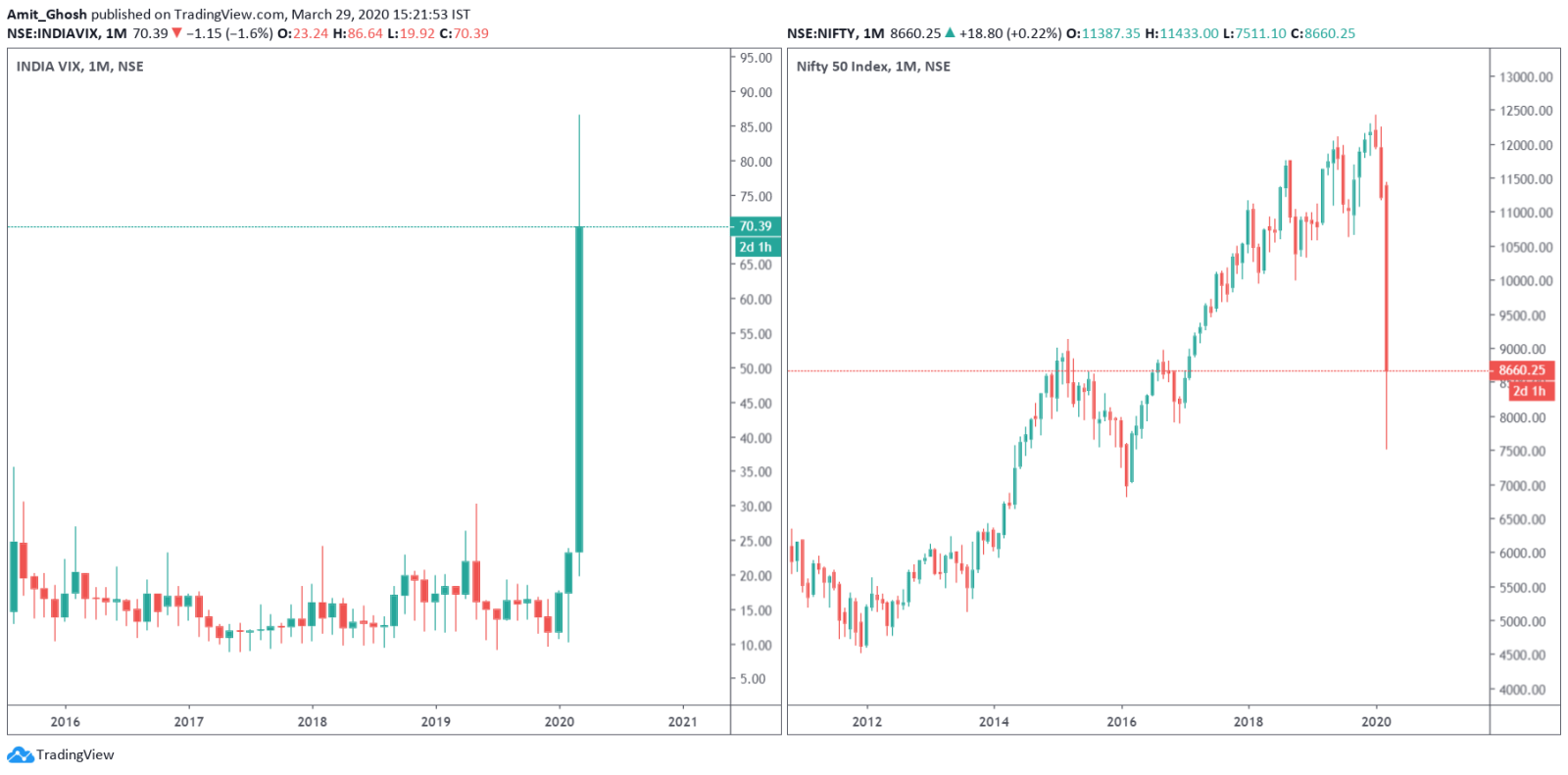Vega
Vega is the change in the option price when the Implied Volatility of the underlying asset moves up or down 1%. Our profits/loss from IV collapse will be determined by Vega.
Volatility is calculated by a few things, namely –
- Change on the price.
- The speed at which the change in the price happened.
- Historical Price changes. (If the markets have gapped down over three times in the last three days, there is a high chance it can gap down tomorrow as well, Right?)
- Expected price movements. (Like Fundamental Events)
Vega’s Relation with Expiry:
The far the expiry, the higher the uncertainty and hence the more premiums than to those which expire immediately. Hence, The more time remaining to option expiration, the higher the vega.
This makes sense as the time value (i.e extrinsic value) makes up a larger proportion of the premium for longer-term options and it is the time value that is sensitive to changes in volatility.
Vega’s Relation with Options’ Direction:
Options tend to be more expensive when volatility is higher. Options are insurance! When the volatility is high, the fear is high. When the fear is high, insurance becomes expensive.
Thus, whenever volatility goes up, the price of the option goes up and when volatility drops, the price of the option will also fall. When calculating the new option price due to volatility changes, we add the vega when volatility goes up but subtract it when the volatility falls.
Therefore, Long Options and Spreads have positive Vega while Short options and Spreads have negative Vega.
- Calendar Spread and Diagonal Spreads have long vega exposures.
- Naked options, Strangles, Straddles, Iron Condors, Short Vertical Spreads have negative vega.
In short,
- An increase in IV will benefit long option holder.
- A decrease in IV will benefit the short option holder.
Straddles and Strangles are Delta neutral option strategies. So, Large moves are bad for these. The more the theta and IV (Hence, Vega) goes down, the more profit we will make here. Normally, We hold short vega portfolio as options sellers. We are exposed to a volatility spike.
Vega’s Relation with Market Crash:
Market going down spikes the fear and irrationality and hence, it also spikes the volatility. So, it has a negative correlation with the markets. The market falls with more velocity while falling but it rises up slow. (Fear always triumphs over greed!). So, volatility expansion also happens at a rapid pace. So it is always better to manage our vega.

Here is a side by side image of a spike in Volatility in Indian Markets along with the Stock Market Crash.

